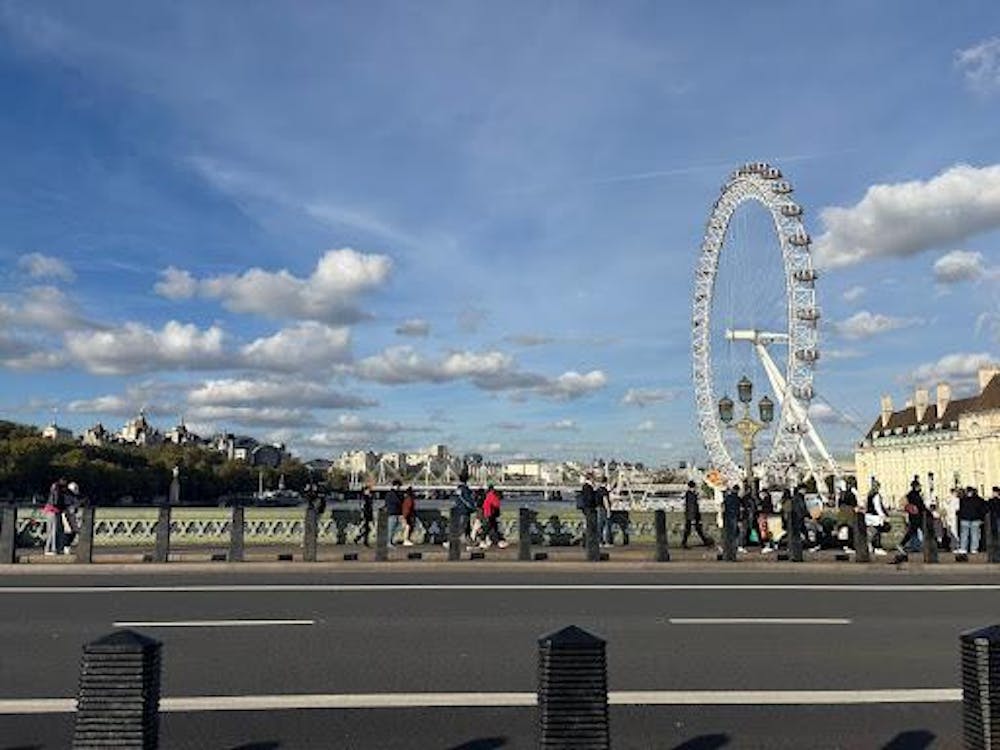As my first midterms week at Princeton came to a close, I listened a little wistfully to others describing the family, friends, and pets they would soon see during fall break. After being completely absorbed in new classes, activities, and community, I was sad to be missing out on hanging out with my dogs, too. But I was also excited, because in a few short days, I would be taking a six-hour plane ride across the Atlantic Ocean to embark on a weeklong adventure — I was going to London.
The freshman seminar I’m taking this semester, FRS 127: Body Builders: Living Systems as Art Media, offers students the opportunity to explore the United Kingdom while learning about biotechnology and art. An obscure combination at first glance, bioart is a storied practice that has influenced scientific and artistic communities for decades. It involves working with live tissues, organisms, and biological processes as a medium. From Alexander Fleming’s discovery of penicillin to more modern discoveries such as CRISPR, bio artists have been stirring up public discussions on the present and future implications of science’s biggest technologies. Traveling to the United Kingdom allowed us not only to view staggering art collections in a variety of museums, but also to work closely with a renowned bio artist, Anna Dumitriu.
Dumitriu is known for art pieces that incorporate deadly pathogens, including her “Plague Dress,” which features the bacteria Yersinia pestis — responsible for transmitting the plague — bacteria incorporated into a historical garment. Much of Dumitriu’s work deals with our current crisis of antibacterial resistance, along with British medical history, which isn’t always a pleasant subject. She warned us that previous students of hers had fainted during one of her workshops — luckily no one in our class followed suit.
As part of our time working with Dumitriu, we took a trip to the nearby Chalk Reef, where we harvested seaweed for a new art project. It was a cold, wet day, and half the class was wearing shoes without the right traction for clambering over wet rocks, but we decided to embrace the experience. Before long, we had bags filled with various species of seaweed, as well as shells and rocks. It was a bit of a therapeutic experience, the wind blowing in our faces as we explored the plant life of this unfamiliar environment.
At the British Museum, one of the more traditional art exhibits on our itinerary, the collections were vast but primarily showcased traditional artworks from other locations. We did all the other typical London stuff, too — Tower Bridge, Big Ben, Westminster Abbey.
We also toured bioart exhibits that honored figures in medical and scientific history, where we were treated to personal performances from guides who painstakingly took us through the lives of these historical figures. At the Florence Nightingale Museum, Florence herself treated us to a one-woman performance, confiding in us about her childhood, her work in hospitals, and establishing a nursing school. At the Alexander Fleming Laboratory Museum, our guide jokingly asked for a volunteer to have lemon squirted in their eyes to produce tears for a lab experiment just like a political cartoon alleged that Fleming had done. While impromptu audience participation and close-quarters theater can be a bit of an awkward experience, the passion of each performance was tangible and gave us a personal connection to the material we had learned about from afar.
As I navigated the Tube, feeling like a local with the rhythm of the train rocking beneath me, I considered everything we had seen and done here. Yes, sometimes viewing art made from human cells or scraping seaweed off of rocks can be uncomfortable. But that discomfort is an integral part of bioart and of the tourist experience, too. Throughout our trip we saw art that looked directly in the face of cultural biases like AIDS, the everyday indignities of physical disabilities, and tragically destroyed ecosystems. The discomfort that this art provides forces us to consider the present and future implications of the technologies and biological systems driving our world. So despite any momentary unpleasantness, I’m thankful for it.
Lily Hutcheson is a member of the Class of 2028 and a contributing writer for The Prospect and a contributing constructor for the Puzzles Section.








